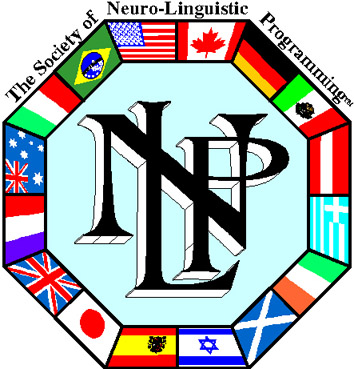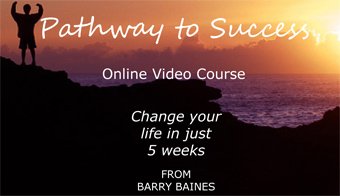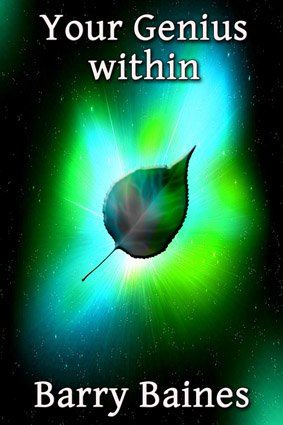NLP sub modalities
NLP secret
Using NLP sub modalities is my first preference for many situations when clients present with their difficulties.
So using a basic technique based on sub modalities was naturally high on the list when Eric told me about his loss of confidence.
 Unfocused |
 Framed |
In neuro linguistic programming we don’t treat patients; we give people lessons on how to think and make better choices.
Richard Bandler
As soon as Eric started to tell me that he couldn’t see past failing, felt dreadful and lacked confidence, I knew he was making pictures of his own downfall. The language gives it away.
And it didn’t take much prompting to discover that the pictures were big – enormous in fact – bright and right in front of his face.
The picture
I found out everything I could about the picture or pictures. Was there more than one? How big was it? I asked him to demonstrate that. Was it still or moving?
Where was it? Again, I asked him to point to the spot. How far away was it? Was it bright or dim?
What was its shape. Did it have a frame or was it panoramic? Was it in colour or black and white?
Was it focused or unfocused? Was it three-dimensional? Did it glow or sparkle?
The list of questions that can be asked is almost endless and may depend on how the client presents, but those are the sorts of questions I asked Eric about his pictures.
NLP sub modalities – the feelings
Then I moved on to his feelings or kinaesthetic sub modalities. He had already told me how dreadful he was feeling, so it was the obvious next step.
I asked him which way were the feelings going. Do they feel heavy or light? How intense are they? Which way do they move?
Clients may at first say they do not know or cannot say but with a little encouragement and concentration will discern the way the feelings are spinning.
After all, they can only move up, down, sideways or spin forwards or backwards.
Where are those feelings in the body, I asked, and are there any tactile sensations? Again, there are many questions that can be asked in different circumstances.
Auditory NLP sub modalities
The next main sub modality to ask him about was the sounds associated with the pictures and what were the feelings. Firstly, was there one or more than one? How loud or soft?
What was the tone, tempo and pitch of the sounds? Did they come from or go in a particular direction? How intense were they?
Were they close or distant? Were the sounds harmonious or dissonant? Were they in mono or stereo? Was there a rhythm associated with them?
Gustatory and olfactory NLP sub modalities
Finally I dealt with taste and smell and asked if there was any particular smell or taste associated with the experience. Often there aren’t but it is always worth asking.
I wanted to know if they were sweet, sour or salty, fragrant or bitter. Was it a pungent smell, for example?

Eric told me that the picture was directly in front of him, it was panoramic, right in front of his face, bright and colourful, three-dimensional with moving images and he was seeing it in an associated state (through his own eyes).
There were, he said, no sounds, tastes or smells that he could discern, but the feeling in the pit of his stomach seemed to be spinning backwards.
NLP sub modalities and spinning the feelings
So I asked him first to recall the feeling, and spin it backwards but faster. Not surprisingly, you may think, it made him feel worse.
I then asked him to reverse the direction of the spinning and spin it slowly forwards, and the bad feeling lessened.
Then I asked him to spin it faster and faster, and the faster he spun it in the opposite direction the better he felt.
NLP sub modalities and controlling the feelings
At this stage Eric was beginning to get the idea that he could control his feelings by altering the sub-modalities.
Next I asked him to think of the picture that he found so upsetting and to change it from a movie into a still, to see himself in the picture (dissociated), to drain the colour from it so that it was pale shades of grey and white and to push it off into the distance.
As it went off into the distance he was to see it getting smaller and smaller, disappearing towards the horizon until it hit the sun and exploded into millions of tiny fragments.
This was another demonstration to Eric of how he could control the sub modalities of what was happening and affect his own feelings.
Then I asked him to bring back the unpleasant image and repeat the exercise until the unwanted picture was so dim and lifeless that he could no longer recall it sufficiently to bring it back.
This is an NLP secret that I suggest you practise yourself with unwanted images. We all make them from time to time.
It is a basic technique I practise with clients and have used successfully on myself.
Further ways to adjust visual images with NLP sub modalities
There are further useful ways we can adjust visual images and, although it wasn’t necessary to do so in Eric’s case, I have used them in others.

One is to get the client to look at the unwanted image and, as she does so, get her to adjust an imaginary old-fashioned television button so that the more she turns it anti-clockwise, the whiter it gets until the screen is completely white.
Then have her bring back the image and repeat the exercise until she can no longer recall it.
NLP sub modalities and hypnagogic turns
There is another technique of a similar nature that I have found particularly successful with clients who have a strong religious faith.
I had a client who suffered with hypnagogic turns, something that can happen just as you are drifting off to sleep.
Some clients experience strong, unpleasant visual images and, at the same time feel, for example, that someone gets into bed alongside them or feel heavy pressure and believe that someone is climbing on top of them.
The sensations can be quite frightening but occur because whilst part of the body has closed down to sleep and the muscles have relaxed, the brain is still partly alert.
My client, Joanna, found the experience terrifying, recalled trying to call out but being unable to do so and then waking to find there was no-one else in the bedroom except her.
Joanna felt so unnerved that she did not want to go back to sleep and found herself going around the house locking doors.
Once the client understands what is happening, when the experience happens on a future occasion the unconscious mind will kick in to say “This is not real”. It is, however, still a nasty experience.

NLP sub modalities and the use of religious symbolism
Joanna is a devout Christian so I suggested she used the Christian symbol of the cross to assist her.
The next time this unpleasant experience occurred and her unconscious stepped in, she mentally held a bright, white cross in front of it, and the cross radiated white light of such intensity that it completely obliterated the image.
She soon woke up after this, but when she did so it was in a much more relaxed frame of mind and she was able to drift peacefully back to sleep.
So whatever the problem the client has, experiment with the sub modalities and surprise everyone with what can be achieved.
Below you will find other explanations of various parts of the NLP secret.
- Anchors
- Anchors Explained
- Association and Dissociation
- Body Language Signs
- Body Language, How to read
- Building Rapport
- Embedded Commands
- Godiva Chocolate
- Modelling
- Modelling Genius
- Modelling helped me
- NLP Language Patterns - Deletion
- NLP Language Patterns - Distortion
- NLP Language Patterns - Generalisations
- NLP Language Patterns - The Meta Model
- NLP Language Patterns - Towards and Away
- Pacing and Leading
- Perceptual positions
- Reframing
- Spatial anchoring
- States
- (Changing) States
- Sub modalities
- Swish Pattern
- Visualisation
Gain FREE access to my self-confidence video
To gain free access to my self-confidence video enter your email address and first name in the box below. This will also keep you up-to-date with my free newsletter Inspirations.
As a bonus for subscribing you'll receive the first three chapters of my book Towards Success, where you can learn more about NLP techniques, from Anchors to Modelling, and my 50 favourite inspirational quotations.
Return from NLP sub modalities to
The Secret of Mindpower and NLP Home
Return to Site Search & Contents Page

Change your life in just 5 weeks
Discover the pathway to success with my online video course. Learn more

Download NEW ebook Your Genius Within and find out how to uncover your own inner genius

NLP Articles
- Anchors
- Anchors explained
- Anger Management tips
- Anxiety Panic Attacks
- Beating disappointment
- Beating drug addiction
- Best self-help book
- Big events
- Body control module
- Body language attraction
- Body language flirting
- Body language in communication
- Body language interpretation
- Body language of a liar
- Body language signs
- Boost self-confidence
- Building Rapport
- Changing bad habits
- Changing beliefs
- Changing States
- Children
- Christmas (Holidays)
- Christmas & New Year greetings
- Chronic pain management
- Conquering Fear
- Crohn's Disease
- Cure for a Phobia
- Deal with your fear
- Deletion
- Determining your destiny
- Developing your senses
- Disaster to Triumph
- Distortion
- Drawing the line
- Embedded Commands
- Enthusiasm
- Exams
- Expecting the Best
- Expert Relationship Advice
- Eye accessing cues
- Fear of driving
- Fear of elevators
- Fear of flying
- Fear of the dentist
- Fear of vomiting
- Fear, Mental Blocks & Hesitation
- Fear, Uncertainty and Doubt
- Fight or flight response
- Finding Solutions
- Forever Worried?
- Friendly persuasion
- Generalisation
- Get the life you want
- Getting lucky
- Getting over your past
- Goal Setting Tips
- Goal Setting Tools
- Goal Setting Tools, More
- Great self-help books
- Grief
- Happy retirement
- Healthy Mind
- High blood pressure
- How long will I live?
- How to be lucky
- How to read body language
- Hypnosis & NLP
- Hypochondria
- Imagining perfect performance
- Improving speed reading
- Instant Mood Lift
- Interviews
- Knowing yourself
- Learn NLP
- Life Values
- Maintaining weight loss
- Make you thin
- Making it happen
- Managing change
- Meddling Mom
- Meeting People
- Mental rehearsal techniques
- Meta Model
- Metaphor
- Modelling
- Modelling Genius
- More NLP techniques for weight loss
- NLP Books
- NLP Courses
- NLP Practitioner Course
- NLP Master Practitioner Course
- NLP Secret
- NLP jargon buster
- NLP Modelling helped me
- OCD symptoms
- OCD treatment
- Overcoming low self-esteem
- Overcoming stage fright
- Pacing & Leading
- Persuasion
- Presuppositions
- Presuppositions (2)
- Problem solving
- Public Speaking
- Reaching agreement
- Reframing
- Self-confidence
- Self limiting beliefs
- Self-image
- Sportsmen Guide
- Stage fright tips
- Stammering
- States
- Stop binge eating
- Stop Smoking
- Subliminal Persuasion
- Success Principles
- Techniques for persuasion
- Techniques for weight loss
- The meaning of NLP
- Time & NLP
- Towards
- Towards & Away
- Ulcerative colitis
- Weight Loss
- Weight loss techniques
Articles on HYPNOSIS:
- Big events
- Conversational Hypnosis
- Covert hypnosis
- Deepening self-hypnosis
- Depression Hypnosis
- Handshake interrupt
- How to do self-hypnosis
- How to hypnotise your audience
- Hypnosis and Weight Loss
- Hypnosis NLP
- Hypnosis: Right or Wrong
- Hypnosis Stories
- Hypnotic language
- Hypnotism Stories
- Hypnosis story for you
- Hypnosis to quit smoking
- Instant self-hypnosis (age regression)
- Practical self-hypnosis
- Self-Hypnosis
- The Milton Model
Articles about THE SECRET of:
- Abundance Mentality
- Achieving more
- Beating Domestic Violence
- Being bothered
- Being Happy
- Best Self-help Book
- Conquering road rage
- Coping with criticism
- Dealing with pride
- Defeating stress
- Discover the secret of wealth
- Genius
- Getting off to sleep
- Getting over a break up
- Getting over your temper tantrum
- Health
- How to deal with grief
- Imagination
- Influence
- Love
- Making Money
- Managing others
- Memorising a Deck of Cards
- Memory
- My Success
- Organising Memory
- Overcoming tiredness
- Overcoming worry
- Perpetual energy
- Remembering
- Secret Law of Attraction books
- Sleeping well
- Speed Reading
- Super Memory
- Surviving a recession
- Surviving negativity
- The Secret Law of Attraction
- Towards
- Teachers of the Secret
- Waiting for God
- Wealth Building
- Weight Loss
Articles about COACHING:
- Barriers to effective communication
- Communication
- Executive Business Coaching
- Feedback
- Free interview tips
- Free Life Coaching
- Goal Setting Tips
- Goal Setting Tools
- Goal Setting Tools, More
- Life & Executive Coaching
- Personal Development Plan
- Problem solving
- Success Principles
- The Secret of my Success
- Time Management
Articles on GENIUS and MIND POWERS:
- Activating genius
- Become a genius
- How long will I live?
- Mind Powers
- Misty Reflections
- Modelling Genius
- The Secret of Genius
Articles about MEMORY:
Articles about RELATIONSHIPS:
- Beating domestic violence
- Body language flirting
- Expert relationship advice
- Healthy family relationships
- Hurt feelings
- Love
- Relationship problem advice
- Signs of true love
- The secret of getting over a break up
Articles on WEALTH:
Articles on WEIGHT LOSS:
- Best Weight Loss Plan
- Body control module
- Easy weight loss
- Hypnosis and Weight Loss
- Maintaining weight loss
- More NLP techniques for weight loss
- NLP techniques for weight loss
- NLP techniques to make you Thin
- NLP weight loss techniques
- Stop binge eating
- The Secret of weight loss
- Weight control help
- Weight loss tips
- Why have I lost weight?
Articles on SECRET and INSPIRATIONAL TEACHERS:
- Bill Harris
- Bob Proctor
- Dr John F DeMartini
- Hale Dwoskin
- Jack Canfield
- Joe Vitale
- John Assaraf
- Lisa Nicholls
- Michael Bernard Beckwith
- Stephen R Covey
Real Women of Genius Articles:
Real Men of Genius Articles:
- Abraham Lincoln
- Albert Einstein
- Antoni Gaudi
- Carl Jung
- Charles Darwin
- Charles Dickens
- Christopher Wren
- Confucius
- George Washington
- Hannibal
- Horatio Nelson
- Isaac Newton
- Julius Caesar
- Lawrence of Arabia
- Leonardo da Vinci
- Michelangelo
- Mohatma Gandhi
- Napoleon Bonaparte
- Nicolas Copernicus
- Oscar Wilde
- Rembrandt
- Robert Burns
- R L Stevenson
- Socrates
- Walt Disney
- William Shakespeare
- Wolfgang Amadeus Mozart








New! Comments
Have your say about what you just read! Leave me a comment in the box below.